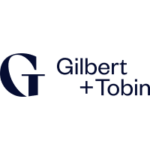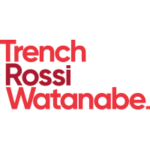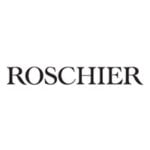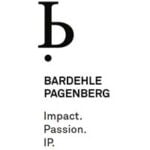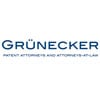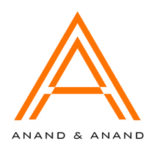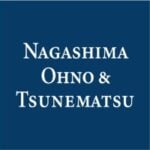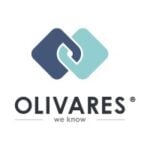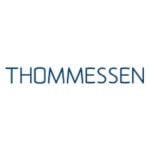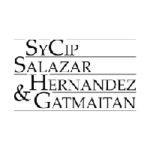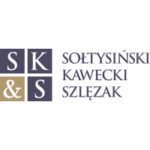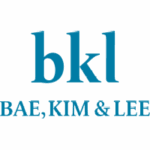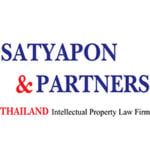-
What is the forum for the conduct of patent litigation?
In the United States, federal district courts are the primary forum for patent litigation, holding original jurisdiction for all patent cases. They handle primary patent issues like infringement, invalidity, ineligibility, unenforceability, and related matters like ownership, licensing, and contract disputes. They also grant various remedies, primarily damages, and injunctive relief. Notably, the Western and Eastern Districts of Texas, the District of Delaware, and the Central and Northern Districts of California have some of the busiest patent dockets.
Another U.S. forum for patent litigation is the International Trade Commission (ITC). The ITC is an independent federal agency that can investigate and adjudicate cases involving unfair trade practices, including importing articles that infringe a U.S. patent. The ITC applies the same substantive patent law as federal district courts, but it is limited to injunctive relief, primarily excluding the importation of infringing products. ITC proceedings are typically faster, averaging 18 months to trial, and are often used by competitors in cases involving imported goods like hardware and electronics. These proceedings can result in a mandatory stay of ongoing federal district court litigation.
Parties can also initiate administrative proceedings before the U.S. Patent and Trademark Office (USPTO) to resolve questions of patent validity. In addition to being the federal agency that grants and administers patents, the USPTO reviews already-issued patents through inter partes review (IPR), post-grant review (PGR), and ex parte reexamination (XPR). Depending on the circumstances, these proceedings can run parallel to federal district court and ITC infringement actions and may result in a stay in federal district court litigation.
-
What is the typical timeline and form of first instance patent litigation proceedings?
Federal district courts are the primary forum of first instance for patent litigation. In federal district court, the time from filing a complaint to trial, whether bench or jury, is about two and a half years. Infringement, invalidity, and damages are usually tried together (unless good cause exists to modify this).
-
Can interim and final decisions in patent cases be appealed?
Interim decisions in patent cases, such as rulings on claim construction, discovery motions, or summary judgment, are generally not immediately appealable. However, some exceptions allow for certain interlocutory appeals, such as appeals from orders granting or refusing an injunction.
One kind of interim appeal often sought is a writ of mandamus from the CAFC, ordering a district judge to transfer a case under 28 U.S.C. § 1404(a), which provides for transfer “[f]or the convenience of parties and witnesses, in the interest of justice.” U.S. patentee-plaintiffs often bring suit in the Eastern or Western Districts of Texas, where defendants commonly seek mandamus for transfer.
Final decisions in patent cases may be appealed. The Court of Appeals for the Federal Circuit (CAFC) has exclusive appellate jurisdiction over patent cases from district courts and ITC and USPTO patent proceedings. The CAFC decisions may be appealed to the U.S. Supreme Court.
-
Which acts constitute direct patent infringement?
Under 35 U.S.C. § 271(a), anyone who “makes, uses, offers to sell, or sells any patented invention, within the United States or imports into the United States” any patented invention during the term of that patent directly infringes. There are two types of direct infringement: (1) literal and (2) under the doctrine of equivalents.
Literal infringement: Literal infringement requires that the accused product or process practice each and every limitation as recited in a claim.
Doctrine of equivalents: Under the doctrine of equivalents, an accused product or process may infringe if there is substantial equivalence between the elements of the accused product and the claimed invention.
Produced outside the U.S.: Note that § 271(a) would not apply to a product made overseas using an infringing process if the product itself were not covered by a patent. § 271(g) closes this loophole bycreating liability for importing into the United States “a product which is made by a process patented in the United States.”
-
Do the concepts of indirect patent infringement or contributory infringement exist? If, so what are the elements of such forms of infringement?
In the United States, there are two types of indirect infringement: (1) induced infringement under 35 U.S.C. § 271(b) and (2) contributory infringement under 35 U.S.C. § 271(c). Induced infringement occurs when someone induces—persuades, instructs, or encourages—someone else to infringe a patent, and that person actually does infringe. Contributory infringement holds someone liable for providing a direct infringer with a specialised tool or part that enables infringement.
Induced Infringement: A party induces infringement “by actively and knowingly aiding and abetting another’s direct infringement.” C.R. Bard, Inc. v. Advanced Cardiovascular Sys., Inc., 911 F.2d 670, 675 (Fed. Cir. 1990). To prove induced infringement, a patent owner must show that: (1) someone directly infringed; (2) the accused party knowingly took steps that led to those infringing acts; and (3) the accused party knew of the patent and knew or was willfully blind to the fact that the acts were infringing. See Power Integrations, Inc. v. Fairchild Semiconductor Int’l, Inc., 843 F.3d 1315, 1332 (Fed. Cir. 2016).
Contributory Infringement: A party contributorily infringes when it imports, sells, or offers to sell a material component of an infringing product or process, knowing that the product or process will infringe. Making a component by itself is not enough for contributory infringement. To prove contributory infringement, a patent owner must show that: (1) someone directly infringed; (2) the accused party sells, offers to sell, or imports within the United States a material component of that infringing product, material, apparatus, or process; (3) the component is not a staple article or suitable for substantial non-infringing use; and (4) the accused party knew of the patent and knew or was willfully blind to the fact that the component is especially made or adapted for use in infringement. See Fujitsu Ltd. v. Netgear Inc., 620 F.3d 1321, 1326 (Fed. Cir. 2010).
-
How is the scope of protection of patent claims construed?
A patent’s claims define the scope of the invention and provide the measure by which the jury determines whether an accused product or process infringes. To make that task easier, a court may interpret the meaning and scope of claims through a process called claim construction.
During claim construction, terms are generally given their plain and ordinary meaning as understood by a person of ordinary skill in the art at the time of the invention. This person of ordinary skill in the art is “deemed to read the claim term not only in the context of the particular claim in which the disputed term appears but in the context of the entire patent, including the specification.” Phillips v. AWH Corp., 415 F.3d 1303, 1313 (Fed. Cir. 2005) (en banc). If necessary, the court may also consider extrinsic evidence (such as dictionaries, treatises, expert testimony, etc.) to interpret the meaning of claim terms.
A patent owner can vary a term’s plain and ordinary meaning through its own lexicography (by providing a specific definition for a term in the patent’s specification) or prosecution disclaimer (through statements made during patent prosecution to distinguish the invention from and overcome prior art).
-
What are the key defences to patent infringement?
Key defences to patent infringement are non-infringement, invalidity, and equitable defences.
Non-infringement: An accused party can argue that their product or process does not infringe. To infringe, a product or process must meet all limitations of the asserted claim, either literally or under the doctrine of equivalents. If an accused product does not meet all limitations, then it does not infringe.
Ineligibility: Section 101 requires claimed inventions to be directed to patent-eligible subject matter, meaning that the invention must be human-made and useful. A patent claim is ineligible under 35 U.S.C. § 101 if it is directed to an abstract idea, a law of nature, or a natural phenomenon without adding any transformative inventive concept. Patent eligibility is a common issue for software patents, in part because the Supreme Court has yet to resolve uncertainty as to how courts should apply Alice Corp v. CLS Bank Int’l, 573 U.S. 208 (2014) to such patents. See, e.g., Audio Evolution Diagnostics, Inc. v. United States, 145 S. Ct. 2777 (2025) (denying certiorari for Federal Circuit ineligibility ruling on human organ sound recording patent); Eolas Techs. Inc. v. Amazon.com, Inc., 2024 WL 371959 (Fed. Cir. Feb. 1, 2024), cert. denied, 145 S. Ct. 149 (2024) (denying certiorari over invalidation of software patents on subject matter eligibility grounds).
Invalidity: An accused party can challenge the patent’s validity as a defence. A patent may be invalid based on anticipation by the prior art, obviousness over the prior art, lack of enablement, lack of written description, or indefiniteness. An invalid patent cannot be infringed.
Equitable Defences: An accused party can also raise certain equitable defences that render the patent unenforceable against that party, such as equitable estoppel, implied license, and intervening rights. An accused party can also raise equitable defences that render the patent unenforceable against anyone, such as alleging inequitable conduct committed during patent prosecution before the USPTO.
-
What are the key grounds of patent invalidity?
Lack of novelty: A patent claim is invalid under 35 U.S.C. § 102 if it is anticipated by a single prior art reference that discloses all its elements, either expressly or inherently.
Obviousness: A patent claim is invalid under 35 U.S.C. § 103 if it is obvious over prior art, whether it is a combination of prior art references or a single reference modified given the knowledge of a person having ordinary skill in the art, considering the scope and content of the prior art, the differences between the prior art and the claims, the level of ordinary skill in the art, and any objective indicia of nonobviousness, such as commercial success, long-felt but unsolved need, failure of others, or unexpected results.
Lack of written description: A patent claim is invalid under 35 U.S.C. § 112(a) if it lacks sufficient written description. A patent must have sufficient disclosure to reasonably convey to those skilled in the art that the inventor had possession of the claimed invention.
Lack of enablement: A patent claim is invalid under 35 U.S.C. § 112(a) if it does not enable a person of ordinary skill in the art to practice the claimed invention without undue experimentation.
Indefiniteness: A patent claim is also invalid under 35 U.S.C. § 112(b) for indefiniteness if the claim, read in light of the specification and the prosecution history, fails to inform a person of ordinary skill in the art about the scope of the invention with reasonable certainty.
-
How is prior art considered in the context of an invalidity action?
Prior art is “knowledge that is available, including what would be obvious from it, at a given time, to a person of ordinary skill in an art.” Kimberly-Clark Corp. v. Johnson & Johnson, 745 F.2d 1437, 1453 (Fed. Cir. 1984) (en banc). Prior art can take the form of patents, applications for patents, other printed publications, publicly used products, or any other reference otherwise publicly available before the effective filing date of the claimed invention.
Prior art is typically used to argue that a patent is anticipated or obvious. A patent claim is invalid if it is anticipated by a single prior art reference that discloses all of its elements, either expressly or inherently–i.e., “[t]hat which infringes, if later, would anticipate, if earlier.” Peters v. Active Mfg. Co., 129 U.S. 530, 537 (1889). A patent claim is invalid as obvious “if the differences between the claimed invention and the prior art are such that the claimed invention as a whole would have been obvious before the effective filing date of the claimed invention to a person having ordinary skill in the art.” 35 U.S.C. § 103.
-
Can a patentee seek to amend a patent that is in the midst of patent litigation?
A patentee can seek to amend a patent during a district court litigation, by filing a reissue application at the USPTO or seeking to amend a patent during IPR or XPR proceedings. Patentees will generally need to retain counsel separate from their district court litigation counsel to seek amendments. Amended claims must not enlarge the patent’s scope (unless within the first two years of the patent’s issuance) or introduce new matter, and may be subject to third-party intervening rights. Importantly, amending a patent can significantly reduce or eliminate the amount of damages the patentee seeks in the district court litigation. The amended claims typically cannot support past damages, unless the patentee shows that there have been no substantial changes to the original claims. If substantial changes have been made, the patentee is only entitled to infringement damages for the period following the amendment.
-
Is some form of patent term extension available?
A patent term adjustment (PTA) or patent term extension (PTE) is available to compensate a patent owner for delays during patent prosecution of plant and utility patents.
A PTA compensates for delays caused by the USPTO during patent prosecution. The USPTO guarantees, with some limitations, that an application will be processed within three years from the initial filing date. Any delay after that period will result in an extension of one day for every day over the three-year period until the patent is issued.
A PTE compensates for delays caused by other administrative agencies, such as the Federal Drug Administration, during the regulatory review period before a product can be commercially marketed or used.
-
How are technical matters considered in patent litigation proceedings?
Technical matters are typically presented in two ways:
Agreed-Upon Technical Expert: The district court may appoint a technical expert to assist with technology tutorials, claim construction, discovery, and dispositive motions like summary judgment. The court may ask parties to submit nominations, but may appoint any expert of its choosing.
Party Experts: Each party may retain its own technical experts (who do not share in the case’s success) to discuss issues such as infringement, validity, and the level of ordinary skill in the art. Expert testimony at trial is often subject to motions seeking to exclude some or all the testimony from being presented to the jury.
-
Is some form of discovery/disclosure and/or court-mandated evidence seizure/protection (e.g. saisie-contrefaçon) available, either before the commencement of or during patent litigation proceedings?
The United States does not have a seizure mechanism like saisie-contrefaçon. Instead, the United States has a system for seizing infringing goods at its borders through U.S. Customs and Border Protection and uses court orders to preserve evidence during litigation.
Federal district courts also embrace liberal discovery and disclosure to prevent “trial by surprise,” reducing court congestion and encouraging early resolution of matters. Discovery obligations also impose financial and administrative burdens, incentivizing settlements.
“Unless otherwise limited by court order,” parties “may obtain discovery regarding any nonprivileged matter that is relevant to any party’s claim or defence and proportional to the needs of the case, considering the importance of the issues at stake in the action, the amount in controversy, the parties’ relative access to relevant information, the parties’ resources, the importance of the discovery in resolving the issues, and whether the burden or expense of the proposed discovery outweighs its likely benefit.” Fed. R. Civ. P. 26(b). While courts have latitude to broadly interpret relevancy and proportionality, most courts favour the party requesting discovery. While the requesting party is responsible for showing relevance, the opposing party bears the burden of establishing that the proportionality test is not met.
-
Are there procedures available which would assist a patentee to determine infringement of a process patent?
The patent owner bears the burden of proving infringement by a preponderance of the evidence. This is true for both system and method claims, with minimal exceptions.
In actions alleging infringement of a process patent based on the importation, sale, offer for sale, or use of a product made by that patented process, the burden shifts to the accused infringer to show “that the product was not made by the process,” if the court finds “(1) that a substantial likelihood exists that the product was made by the patented process, and (2) that the plaintiff has made a reasonable effort to determine the process actually used in the production of the product and was unable to so determine.” 35 U.S.C. § 295; see id. § 271(g). “Because the accused infringer is in a far better position to determine the actual manufacturing process than the patentee, fairness dictates that the accused, likely the only party able to obtain this information, reveal this process or face the presumption of infringement.” Creative Compounds, LLC v. Starmark Lab’ys, 651 F.3d 1303, 1314–15 (Fed. Cir. 2011).
-
Are there established mechanisms to protect confidential information required to be disclosed/exchanged in the course of patent litigation (e.g. confidentiality clubs)?
Due to the complexity and confidentiality of technical, sales, and marketing information necessary to patent cases, parties often seek the court’s permission for a protective order. This order limits the disclosure of sensitive information to a select group, such as a limited number of in-house counsel or only outside counsel, and prohibits disclosure of such information to the public.
-
Is there a system of post-grant opposition proceedings? If so, how does this system interact with the patent litigation system?
In the United States, there are three kinds of post-grant opposition proceedings in which the USPTO may reconsider whether a patent was correctly granted: (1) inter partes review (IPR) under 35 U.S.C. §§ 311–319, (2) post-grant review (PGR) under 35 U.S.C. §§ 321–329, and (3) ex parte reexamination (XPR) under 35 U.S.C. §§ 301–305.
Such proceedings can be filed concurrently with district court litigation. Depending on the circumstances, a district court may either proceed in parallel or stay proceedings pending the USPTO’s determination, since the USPTO may invalidate some or all claims, simplifying the district court’s case. The USPTO may also decline to institute IPR proceedings based on ongoing district court litigation.
Notably, eligibility for post-grant proceedings is constantly changing. For example, the USPTO revised the procedure for discretionary denials in AIA post-grant proceedings earlier this year. In light of these shifts, it is advisable that patentees who intend to avail themselves of these mechanisms seek assistance from counsel early.
-
To what extent are decisions from other fora/jurisdictions relevant or influential, and if so, are there any particularly influential fora/jurisdictions?
Decisions of other intellectual property (IP) jurisdictions and comparative patent law have a limited role in U.S. patent litigation. Decisions from other jurisdictions are persuasive, but not controlling authority for district courts. Comparative patent law may be important on specific ownership issues, contract and licensing rights, and privilege during discovery.
-
How does a court determine whether it has jurisdiction to hear a patent action?
Jurisdiction
A court must have both subject matter jurisdiction and personal jurisdiction to hear a case. Federal district courts have Congressionally granted subject matter jurisdiction over patent actions under 28 U.S.C. § 1338. As for personal jurisdiction, there is no rule particularly for patent cases. Plaintiffs generally must show that the defendant is either “essentially at home” in the state or that it possesses certain “minimum contacts” with the state such that the suit does not “offend traditional notions of fair play and substantial justice” (there are also traditional bases of personal jurisdiction such as consent and waiver). World-Wide Volkswagen Corp. v. Woodson, 444 U.S. 286, 291 (1980).
Even where jurisdiction is proper, it is important to consider the possibility that the particular district court is not the right venue, a different but related doctrine to personal jurisdiction. Unlike personal jurisdiction, venue does have specific rules for patent cases. See 28 U.S.C. § 1400(b). Applying this statute in 2017, the Supreme Court narrowed the scope of where venue is proper in patent cases against corporate defendants to states (1) in which defendants are incorporated or (2) in which they have regular and established places of business and have committed acts of infringement. TC Heartland LLC v. Kraft Foods Grp. Brands LLC, 581 U.S. 258, 267–68 (2017). This case led to a reduction in “forum shopping” in patent cases, where patentee-plaintiffs chose the Eastern or Western Districts of Texas to benefit from perceived strategic advantages.
Finally, even where venue is proper, it may be inconvenient, and a district court may be convinced to transfer the case to a more convenient forum under the doctrine of forum non conveniens, codified in 28 U.S.C. § 1404(a). Disputes over venue are common where plaintiffs have chosen advantageous district courts, and where transfer is denied, defendants often seek a writ of mandamus from the CAFC to command transfer to a more convenient forum.
Anti-Suit Injunctions
Once a court determines it had jurisdiction, it may on rare occasion use an anti-suit injunction (“ASI”) to preserve it. An ASI is an interlocutory remedy issued by a court that prohibits a party from initiating or continuing parallel litigation in another jurisdiction. In the U.S., ASIs have been issued in a wide range of commercial, antitrust and bankruptcy actions involving foreign parties or subject matter. In recent years, ASIs have also been used significantly in IP disputes that involve the adjudication of global fair, reasonable and nondiscriminatory (“FRAND”) rates for standard-essential-patent (“SEP”) licenses. Jorge L. Contreras, Anti-Suit Injunctions and Jurisdictional Competition in Global FRAND Litigation: The Case for Judicial Restraint, N.Y.U. J. Intell. Prop. & Ent. L. 171 (2021).
U.S. courts apply a three-part framework to decide whether issuing an ASI is appropriate. First, the court examines whether the parties and issues are the same as between the domestic and foreign suits, and whether resolution of the domestic suit is dispositive of the foreign action. Telefonaktiebolaget LM Ericsson v. Lenovo (U.S.), Inc., 120 F.4th 864, 870 (Fed. Cir. 2024). If so, it considers whether one of the anti-suit injunction factors applies, including whether the foreign litigation would (1) frustrate a policy of the forum issuing the injunction; (2) be vexatious or oppressive; (3) threaten the issuing court’s in rem or quasi in rem jurisdiction; or (4) prejudice other equitable considerations. Id. If at least one of the factors is present, the court must assess whether the ASI’s impact on comity, or its respect for the laws of other jurisdictions is “tolerable.” If so, the court may issue the ASI. Id. (citing Microsoft Corp. v. Motorola, Inc., 696 F.3d 872, 881 (9th Cir. 2012)). In the IP context, ASIs are a powerful, but infrequently used, tool for courts to preserve jurisdiction, most often used when litigation involves SEP licenses.
-
What are the options for alternative dispute resolution (ADR) in patent cases? Are they commonly used? Are there any mandatory ADR provisions in patent cases?
Nearly all heavy patent jurisdictions encourage ADR to reduce the burdens on the district court. Private resolution also helps the parties find a mutually agreeable business solution. Many jurisdictions will require at least one ADR session, and in other instances, the parties may seek and/or the district court may order multiple (with no limit) ADR sessions. The vast majority of the cases end up settling through these sessions or later after key rulings.
-
What are the key procedural steps that must be satisfied before a patent action can be commenced? Are there any limitation periods for commencing an action?
Pre-filing diligence: Any lawyer signing a complaint alleging patent infringement certifies that they have conducted a reasonable legal and factual inquiry underlying the allegations in the complaint. A failure to do so may subject the lawyer and the client to monetary and other sanctions.
Six-year limitations period: While there is no “limitations period” per se, under 35 U.S.C. § 286, a patentee typically cannot recover for any infringement committed more than six years prior to the filing of the infringement complaint or counterclaim.
-
Which parties have standing to bring a patent infringement action? Under which circumstances will a patent licensee have standing to bring an action?
The patent owner has standing to bring a patent infringement action against an accused infringer. An exclusive licensee may also have standing to bring suit if its license amounts to a patent assignment.
-
Who has standing to bring an invalidity action against a patent? Is any particular connection to the patentee or patent required?
In the district court, a party accused of infringing a patent or who faces a credible threat of such accusation may have standing to bring a declaratory judgment action to challenge the validity or scope of the patent if there is an actual controversy between the parties that is ripe for judicial resolution.
There is no standing requirement before the USPTO, and any party other than the patent owner can request IPR, PGR, or XPR.
-
Are interim injunctions available in patent litigation proceedings?
Preliminary injunctions are available but are “an extraordinary remedy that may only be awarded upon a clear showing that the plaintiff is entitled to such relief.” Winter v. Nat. Res. Def. Council, Inc., 555 U.S. 7, 22 (2008). A patent owner must show it is (1) likely to succeed on the merits, (2) likely to suffer irreparable harm in the absence of preliminary relief, (3) that the balance of equities tips in its favour, and (4) that an injunction is in the public interest.
Since the eBay v. MercExchange decision in 2006, courts have adopted a strict interpretation of the standard and have rarely granted injunctions. 547 U.S. 388 (2006). Recently, however, the U.S. Department of Justice and USPTO jointly filed a Statement of Interest in Radian Memory Systems LLC v. Samsung Electronics Co. urging the court to give greater weight to the difficulty of calculating damages when determining whether there is irreparable harm under the test for injunctive relief. Radian Memory Sys. LLC v. Samsung Elec. Co., No. 2:24-cv-1073 (E.D. Tex. filed June 24, 2025). If courts adopt this position, it could considerably lower the hurdle for obtaining preliminary injunctions.
-
What final remedies, both monetary and non-monetary, are available for patent infringement? Of these, which are most commonly sought and which are typically ordered?
Damages are the most commonly sought and awarded remedy in patent infringement cases. After an infringement verdict, a patent owner is entitled to compensation for the infringement, including interest and costs as determined by the court. This compensation may cover:
- Damages Proven at Trial: The primary damages established during the trial, which include reasonable royalty, what a willing licensee would have agreed to at a hypothetical negotiation, or lost profits caused by the infringement.
- Supplemental Damages: For additional infringing conduct occurring after the trial.
- Pre- and Post-Judgment Interest: Interest accrued before and after the judgment.
- Ongoing Royalty: For continued infringement post-judgment.
In cases of egregious infringement, the court may award up to treble damages. Additionally, in exceptional cases, the prevailing party may be awarded attorneys’ fees. Injunctive relief, either preliminary at the start of a case or permanent at the end, may also be available but is not guaranteed.
-
On what basis are damages for patent infringement calculated? Is it possible to obtain additional or exemplary damages? Can the successful party elect between different monetary remedies?
Patentees are entitled to “damages adequate to compensate for the infringement but in no event less than a reasonable royalty for the use made of the invention by the infringer, together with interest and costs as fixed by the court.” 35 U.S.C. § 284. Patentees generally pursue damages based on lost profits due to infringement or a reasonable royalty to compensate for infringement.
To recover lost profits, the patentee must show (1) a demand for the patented product; (2) the absence of acceptable non-infringing substitutes; (3) its own manufacturing and marketing capability to meet demand for the patented product; and (4) the amount of profit lost.
To recover royalty-based damages, patentees can proffer an established royalty, or argue for a “reasonable royalty.” The more common approach for calculating a reasonable royalty is a hypothetical negotiation between the patentee and infringer at the time the infringement began. Another method is the analytical method, which focuses on the infringer’s projected profit for the infringing product.
A patentee may also recover enhanced damages, up to three times the amount awarded, where a court finds the infringer’s conduct egregious. This typically means willful infringement. To make this determination, courts consider a number of factors, including but not limited to: deliberate copying; good-faith belief in invalidity or non-infringement; litigation behavior; closeness of the case; the size, financial condition, and motivation of the infringing party; and the duration, remediation, and concealment of the infringement.
-
How readily are final injunctions granted in patent litigation proceedings?
Permanent injunctions are not granted as a matter of course. A patentee must demonstrate (1) irreparable harm, (2) that a legal remedy (damages) alone would be inadequate, (3) that the balance of hardships favours an injunction, and (4) that the public interest would not be disserved by an injunction. This generally means that, to get an injunction, a patentee must show competitive harm—such as price erosion, lost market share, and damage to goodwill and reputation. If the court does not award an injunction, it may order an ongoing royalty for any infringement after judgment.
-
Are there provisions for obtaining declaratory relief, and if so, what are the legal and procedural requirements for obtaining such relief?
A party may file a complaint for declaratory judgment of non-infringement in district court. The party must establish that there is a case or controversy–i.e., an actual dispute of sufficient immediacy and reality between the parties. In making this determination, courts look to the presence of a dispute as to a legal right, how far in the future the potential infringement is, and the likelihood that the alleged infringing product will indeed infringe if it is produced as designed. Notice of infringement from a patent owner can satisfy the case or controversy requirement, in which case a potential defendant in an infringement action can use a declaratory judgment action to choose the forum. To avoid this risk, notice letters should not contain an “enforcement or defence effort.”
-
What are the costs typically incurred by each party to patent litigation proceedings at first instance? What are the typical costs of an appeal at each appellate level?
In the United States, each party generally bears its own litigation expenses—e.g., attorneys’ fees, expert fees, and costs—whether in district court, administrative agency, or on appeal.
-
Can the successful party to a patent litigation action recover its costs?
Under 35 U.S.C. § 285, a district court may award reasonable attorney’s fees to the prevailing party in “exceptional cases.” An exceptional case “is simply one that stands out from others with respect to the substantive strength of a party’s litigating position (considering both the governing law and the facts of the case) or the unreasonable manner in which the case was litigated.” Octane Fitness, LLC v. ICON Health & Fitness, Inc., 572 U.S. 545, 554 (2014). District courts determine whether a case is “exceptional” on a case-by-case basis, considering the totality of the circumstances.
-
What are the biggest patent litigation growth areas in your jurisdiction in terms of industry sector?
The most significant growth areas in patent litigation in the United States are biotechnology, software, and consumer electronics, fuelled by the growth and integration of cloud services and AI into our daily lives.
-
What do you predict will be the most contentious patent litigation issues in your jurisdiction over the next twelve months?
Permanent injunctions–whether in the ITC or in district court–are likely to be among the most contentious. Injunctive relief is, generally, granted against a competitor and can impact the marketplace and competitive landscape. Battles for market access and market share are hard fought.
Also likely to be contentious is the enforcement of standard-essential patents (SEPs), which cover technologies that are essential to comply with a technical standard, such as wireless communication, video compression, or internet protocols. SEPs are typically subject to a commitment by the patent owner to license them on fair, reasonable, and non-discriminatory (FRAND) terms to anyone who implements the standard. Still, there are many disputes over what constitutes FRAND terms, how to determine them, and how to resolve them in litigation or arbitration.
-
What are the biggest challenges and opportunities confronting the international patent system?
One of the biggest challenges and opportunities confronting the international patent system remains harmonization. The ever-increasing diversity of the global innovation landscape, combined with the complexity of global supply chains, makes harmonization and coordination across borders essential. It also presents the opportunity to foster a more inclusive and accessible patent system, improve the quality of patents, and improve the efficiency of patent prosecution. The Unified Patent Court is a good test case, and its successes and learnings will likely influence more global efforts.
United States: Patent Litigation
This country-specific Q&A provides an overview of Patent Litigatiom laws and regulations applicable in United States.
-
What is the forum for the conduct of patent litigation?
-
What is the typical timeline and form of first instance patent litigation proceedings?
-
Can interim and final decisions in patent cases be appealed?
-
Which acts constitute direct patent infringement?
-
Do the concepts of indirect patent infringement or contributory infringement exist? If, so what are the elements of such forms of infringement?
-
How is the scope of protection of patent claims construed?
-
What are the key defences to patent infringement?
-
What are the key grounds of patent invalidity?
-
How is prior art considered in the context of an invalidity action?
-
Can a patentee seek to amend a patent that is in the midst of patent litigation?
-
Is some form of patent term extension available?
-
How are technical matters considered in patent litigation proceedings?
-
Is some form of discovery/disclosure and/or court-mandated evidence seizure/protection (e.g. saisie-contrefaçon) available, either before the commencement of or during patent litigation proceedings?
-
Are there procedures available which would assist a patentee to determine infringement of a process patent?
-
Are there established mechanisms to protect confidential information required to be disclosed/exchanged in the course of patent litigation (e.g. confidentiality clubs)?
-
Is there a system of post-grant opposition proceedings? If so, how does this system interact with the patent litigation system?
-
To what extent are decisions from other fora/jurisdictions relevant or influential, and if so, are there any particularly influential fora/jurisdictions?
-
How does a court determine whether it has jurisdiction to hear a patent action?
-
What are the options for alternative dispute resolution (ADR) in patent cases? Are they commonly used? Are there any mandatory ADR provisions in patent cases?
-
What are the key procedural steps that must be satisfied before a patent action can be commenced? Are there any limitation periods for commencing an action?
-
Which parties have standing to bring a patent infringement action? Under which circumstances will a patent licensee have standing to bring an action?
-
Who has standing to bring an invalidity action against a patent? Is any particular connection to the patentee or patent required?
-
Are interim injunctions available in patent litigation proceedings?
-
What final remedies, both monetary and non-monetary, are available for patent infringement? Of these, which are most commonly sought and which are typically ordered?
-
On what basis are damages for patent infringement calculated? Is it possible to obtain additional or exemplary damages? Can the successful party elect between different monetary remedies?
-
How readily are final injunctions granted in patent litigation proceedings?
-
Are there provisions for obtaining declaratory relief, and if so, what are the legal and procedural requirements for obtaining such relief?
-
What are the costs typically incurred by each party to patent litigation proceedings at first instance? What are the typical costs of an appeal at each appellate level?
-
Can the successful party to a patent litigation action recover its costs?
-
What are the biggest patent litigation growth areas in your jurisdiction in terms of industry sector?
-
What do you predict will be the most contentious patent litigation issues in your jurisdiction over the next twelve months?
-
What are the biggest challenges and opportunities confronting the international patent system?
